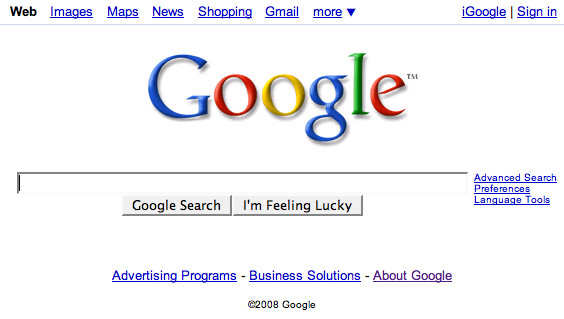Focus question:
What are search
engines and how do they work?
Search engines are online databases, or Internet resources,
in which allows students and teachers to find information. Using online search
engines creates a faster and more efficient way to retrieve information about
any given topic. There are countless webpages that are linked to databases that
initially provide information on the search criteria. Databases are all similar
in the way you are able to plug in key words or topics in the search bar and
you will then be given a wide variety of documents, articles, blog posts, and
video to accommodate your search. A specific benefit from search engines is
that it allows teachers to search a topic and then narrow down the results to
more educationally based articles.
| Photo credit to Lance Padgett on Google Images on |
Tech tool:
5.1 Photo and Audio
Resources on the Web
“Pictures and sounds are valuable resources for creative
teaching.” This sentence from the text says it all. Getting children motivated
to learn is a teacher’s job; pictures and audio sequences help to intrigue them
with new information. Flicker is a great website filled with pictures to
illustrate something you are teaching. The public can go onto the website and
input a key work in the search box and pictures with be retrieved that are
associated with that description. There are many different website that you can
search pictures and get great physical attributes for your lessons. Another
site that is mentioned in the tech tool is LibriVax, which is an audio website.
LibriVax is a website that you can use to listen to a story on audio or you may
record someone reading and let then later play it for the class. This website
helps teachers with their hands on material. Instead of each student actually
reading a book they can just follow along with LibriVax and the story is read
aloud. These sites are great for motivating students to be involved in the
classroom!
Chapter summary:
Chapter five is a very busy and informative
chapter. The chapter goes over what online databases and search engines are and
then into detail on how to go about using the sites correctly to get
corresponding information with the topic input in the search engine. Online
search engines are loaded with endless information about different topics, you
can simply input a topic in the search bar and the site will then retrieve a
variety of informational articles, blog posts, sites, pictures, and videos
relating to the search. This chapter also specifies what copyright is and how
to avoid all aspects of copyrighting information. Since students are required
to now use search engines and engage in articles and media it is important for
students understand the steps to take to avoid illegally using information in a
school activity. Technology is a great thing for students and teachers inside
and outside the classroom. There are websites that allow students to find
pictures and videos, or articles on a specified topic. There are also websites
that help intrigue students in the learning material by audio features, like
LibriVax. Since technology is forever transforming there is very little that it
cannot provide for students and teachers inside and outside the classroom





